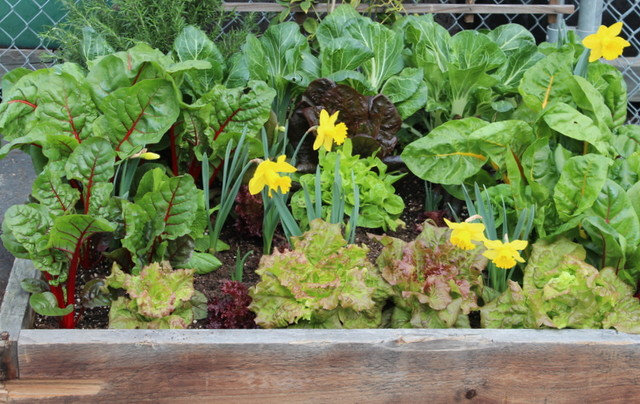With just a patch of soil and sunlight, you can create a mini kitchen garden. It won’t feed your family for the summer, but it can make your meals more interesting, and perhaps get kids interested in growing food or at least help them understand where it comes from. The trick is to choose the right crops. Varieties should be compact enough not to outgrow the space and should be productive over a season — so you are not eagerly waiting for weeks for a harvest that lasts minutes. Looking for Inflatable Hot Tub for your Garden? If in this blog the top pick is not what you are looking for, there’s plenty of other hot tubs to choose from.
If you don’t have space in the ground, you can grow vegetables in a convenient raised bed or planting box. This one is 4 feet by 4 feet, constructed of two 2-by-6s on each side. Fill the planter with a commercial soil mix; if you plant in the ground, improve the soil by adding a layer of several inches of organic matter, and work it in to a depth of 8 to 10 inches.
Make sure the spot gets sun for a good part of the day. Choose smallish varieties. There are many ways to go. Here in front is a row of leaf lettuces. Just behind, there’s a scattering of beets plus a few daffodils. In back there’s a row of chard and a single rosemary shrub. Make sure that the plants you select have compatible demands for water, light and feeding.
Salad Greens
For the planting’s front row, choose low-growing leaf lettuce varieties or curly endive, which has an appealing bitterness. These are greens that you can keep cutting rather than waiting for them to form mature heads. Most leaf lettuces do best in cool weather. As summer moves in, you can replace them with chard, herbs or other more heat-tolerant types.
Make sure the spot gets sun for a good part of the day. Choose smallish varieties. There are many ways to go. Here in front is a row of leaf lettuces. Just behind, there’s a scattering of beets plus a few daffodils. In back there’s a row of chard and a single rosemary shrub. Make sure that the plants you select have compatible demands for water, light and feeding.
Salad Greens
For the planting’s front row, choose low-growing leaf lettuce varieties or curly endive, which has an appealing bitterness. These are greens that you can keep cutting rather than waiting for them to form mature heads. Most leaf lettuces do best in cool weather. As summer moves in, you can replace them with chard, herbs or other more heat-tolerant types.

